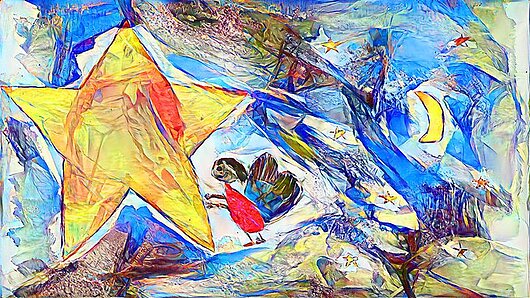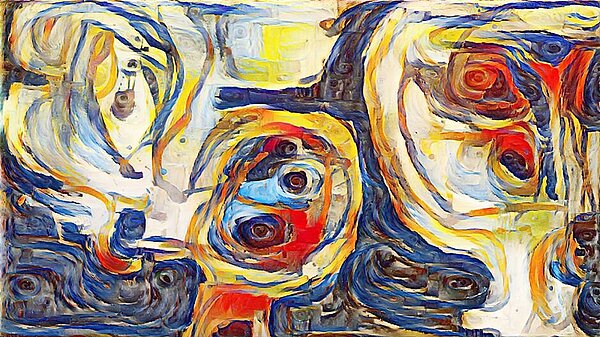High-Performance Computing Center Stuttgart

Lunar Ring created a deep-learning framework that reinterprets paintings from the Emden collection, turning them into an abstract, continually morphing visual flow on a screen. The neural network automatically processes the images based on their compositions and painting styles, retaining traces of the original paintings, while simultaneously producing new effects resulting from the decisions the network makes.

To realize their project, Lunar Ring approached the High-Performance Computing Center Stuttgart (HLRS) and the Media Solution Center Baden-Württemberg, a nonprofit organization founded in 2018 by HLRS, the Hochschule der Medien in Stuttgart, and the Center for Art and Media (ZKM) in Karlsruhe for support. The Media Solution Center connected Lunar Ring with AI experts in the CATALYST project at HLRS, who assisted the artist-scientists in programming the supercomputing center's recently installed Cray CS-Storm cluster.
Members of Lunar Ring first generated a deep-learning framework that enabled the computer to understand aesthetic value. Using this model, software then scans another set of images to identify combinations of paintings likely to produce a new, pleasing result.
"The idea that we're pursuing is how to make this new phenomenon of artificial intelligence more accessible," said Johannes Stelzer, a member of Lunar Ring. "Most people imagine AI as something that is cold, somewhat threatening, and emotionally detached. For us, AI can also be something that is warm and organic, and can lead to very creative results. We want to open the box and make it possible for people to dive into this world and better grasp how it works."
Although the artists' own computers were sufficient for development of the training model, gaining access to 8 nodes on HLRS's CS-Storm cluster, each containing eight Nvidia V100 graphic processing units (GPUs) with 32 GB of memory, was critical for rendering new images at the extremely high resolution the artists sought. Once these images were returned to Tübingen, the artists applied computational liquid algorithms to produce the flowing transformation seen in the exhibit.
Two videos by Lunar Ring are currently on view at the Kunsthalle Tübingen. In one, called 1902-2012, a large, 8K LCD screen displays a video showing the results of this process when applied to the Emden collection. A second, called Wer malt denn da?, blends paintings from Emden with pictures made by children in Tübingen. Visitors to the exhibit are also invited to contribute additional paintings, which will be integrated into the artwork over the course of the exhibition.
How will the computer interpret and use the new images? Not even the artists can predict the results.
—Christopher Williams
Wer malt denn da?: Ein Projekt der Medienkünstlergruppe Lunar Ring is on view at the Kunsthalle Tübingen until June 7.
Video showing an example of Lunar Ring's work is available on YouTube.